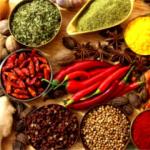Many housewives are accustomed to boiling milk without thinking, especially if it is intended for small children. Let's figure out whether boiling is necessary and what the intricacies of this process are.
Why boil milk?
Boiling helps disinfect raw milk, ridding it of bacteria. Like any product, it is a fertile environment for the proliferation of harmful microorganisms that die during heat treatment. And since the bacteria are destroyed, boiled milk is stored longer than raw milk.
Boil or not?
True, this procedure also has its disadvantages. High temperature not only destroys bacteria, but also destroys vitamins and microelements contained in unpasteurized milk, and also changes the structure of milk protein. The longer a product is cooked, the less vitamins remain in it. Nevertheless, even after this procedure, a sufficient amount of useful substances is retained in the milk. But if you don’t boil the milk you buy by hand, there is a risk of contracting some unpleasant disease, such as E. coli or salmonella. So be sure to boil unpasteurized milk!
Milk from the store
So, a product purchased at the market or from a village grandmother should be boiled. What about milk from a store or hypermarket? This product has already gone through all stages of heat treatment by the time it reaches the store shelf and is completely ready for consumption. If the packaging indicates that it is UHT or baked, there is no need to boil it. The same applies to infant formula - as a rule, they are enriched with vitamins and minerals necessary for the child, which can be destroyed during heat treatment. In some stores you can also see lactose-free sterilized milk. It is suitable for people with lactose intolerance. This product also does not need to be boiled.

Choosing dishes for boiling
How to boil milk? What kind of container is best to do this in? The bottom of the boiling pan should be thick or even double, this reduces the likelihood of burning. As for the material, it is preferable to take stainless steel dishes. If you don’t have one on the farm, an aluminum, glass or ceramic container will also work. But it is not recommended to use it - milk can easily burn in it, and it will not be easy to wash such a container. By the way, some manufacturers of kitchen appliances produce milk cookers designed exclusively for this procedure.

How to boil?
How to boil milk? Rinse the pan with cool water before placing it on the stove, this will prevent the food from burning. If you place a small saucer at the bottom of the dish, the milk will probably not escape: by tapping on the walls and bottom of the container, the saucer will prevent foam from forming on the surface when the liquid begins to boil.
Place the pan on the stove, pour some water into it and wait until it boils. Add a little milk to the boiling water, and if it does not curdle, pour in the rest. Stirring occasionally, bring the product to a boil over medium heat, and then reduce it. After one or two minutes, the pan can be removed from the stove.
During boiling, milk can escape due to the foam that forms on its surface and prevents the rising air bubbles from bursting. You can remove it only during the boiling process, but not after. It is better to leave the film on the cooled product, since it contains most of the useful substances.

How long to boil?
How long does it take to boil milk? Nutritionists disagree on how long to simmer it. Some doctors recommend doing this for ten minutes or even longer to ensure that all harmful microorganisms are destroyed. But many nutritionists advise boiling milk until it begins to boil away.
So how long should you boil milk? It is believed that harmful microorganisms will be neutralized even in a short time. In addition, the shorter the duration of heat treatment of milk, the more nutrients it will retain.
Can you boil it in the microwave?
Doctors note that milk can also be boiled in a microwave oven. True, after this procedure there will be even less vitamins and minerals left in it than after boiling on the stove.
How to boil milk in the microwave? It is impossible to give an exact recipe for heat treatment of this product in a microwave oven - the duration depends on both the volume of liquid and the power of the unit. In addition, when using a microwave oven, it is difficult to notice the moment when the milk begins to overflow, so we recommend pouring it into a glass or other deep container.

- To prevent boiled milk from spoiling for a long time, add a teaspoon of sugar for each liter of product while it is boiling.
- If desired, the saucer will be replaced by a special circle or “guard” - these devices can be bought at any hardware store.
- Neither a circle nor a saucer will be needed if you grease the walls of the pan with oil slightly above the level of the milk - this way it won’t run away either.
- A pinch of soda will prevent stale milk from curdling if you need to boil it.
- If the milk is still burnt, pour it into another bowl, adding half a teaspoon of salt for every 2 liters of product, and lower the bowl into a large container filled with cold water (for example, a basin). It is best not to give the burnt liquid to small children, but you can add it to baked goods.
- If you are not going to drink the milk immediately after boiling, pour it into a tightly sealed container so that it does not absorb the odors of other foods, and put it in the refrigerator.
- The plaque that forms after boiling milk must be thoroughly washed off. It’s better to have a separate container that you will use only for this procedure.
- If it is not possible to store sterilized milk in the cold, boil it twice a day (morning and evening) and cover it with a lid only after it has completely cooled. This way the product will keep for two to three days.
Now you know how to boil milk. We hope this information will be useful to you.
Igor Nikolaev
Reading time: 3 minutes
A A
The properties of fresh and boiled milk differ. The first is valued for its natural taste and the presence of all enzymes in their natural form. But manufacturers offer consumers exclusively processed milk.
Such a product is stored longer under appropriate conditions. Is this the only goal of sellers? Or does raw milk have to be exposed to temperatures for other reasons?
Preferring cow's milk, consumers do not trust store-bought milk. Many people assume that special preservatives have been added to it. Thanks to them, the product supposedly loses all its beneficial properties and becomes “lifeless.” But are all the “live” microorganisms in raw milk really that beneficial?
- When milking, the rules of hygiene of the udder, teats and hands of the farm worker may not be observed.
- After the process was completed, the product was stored incorrectly, allowing bacteria to multiply.
- Cow health. Many infectious diseases of cows are transmitted to humans through milk. It is unlikely that anyone wants to become infected with tuberculosis or pick up the leukemia virus.
- Even a proven cow and its owner should raise doubts. Many diseases develop in animals without visible symptoms. Therefore, the cattle owner may not be aware of their presence.
Therefore, experts advise making boiling mandatory for cow's milk. The procedure allows you to increase the shelf life of the product. At room temperature, raw milk will last for a day, in the refrigerator - three. When heated, bacteria in milk die and rapid souring does not occur. It is recommended to cool the product immediately after this.
How to heat properly?
We are not talking about boiling a store-bought product; it already undergoes the necessary processing; you just need to monitor the expiration date. This is how you need to boil milk from under a cow so that it does not lose vitamins and nutrients:
- boil immediately upon returning home from the market;
- at a temperature of one hundred degrees, it is enough to heat the product for two minutes;
- at sixty degrees or more the time increases to ten minutes.
When the liquid heats up and foam begins to rise, you need to reduce the heat. You should not let the milk “run away” and burn. To obtain a thicker mass, the procedure is continued for half an hour.
Do not heat milk many times. So all useful microelements will disappear from it.
There are a few more points to consider when boiling:
- milk should be boiled in a glass, aluminum or steel pan; it is better not to use an enameled one;
- You can check the liquid for freshness by pouring a glass of water into the pan. As soon as it boils, add a glass of milk. If it has curdled, then you are dealing with a stale product. It is not suitable for consumption in its pure form. But if the milk has not curdled, then you can pour out the rest. A glass of water will evaporate from it;
- a saucer placed upside down on the bottom of the container will prevent the milk from bubbling and spilling over the edges;
- You need to heat the milk over low heat and stir occasionally. This way it will heat up evenly. It is recommended to remove the film before boiling, but not after, because useful substances accumulate in it.


Cow's milk is a popular and healthy product that many children and adults consume daily, but it is often drunk not only raw, but also boiled, so in this article we will look in detail at how many minutes and how to boil the milk so that it does not burn and “ didn’t escape” from the pan.
How long to boil milk
It’s worth noting right away that you don’t need to boil the milk for a long time, and it won’t work, since it will “run away” from the pan (it greatly increases in volume when heated). Moreover, with long-term heat treatment, there will not really be any beneficial substances left in the milk.
- How long should you cook milk in a saucepan? It is enough to bring the milk to a boil and immediately remove the pan from the heat so that it cools; if the milk is being cooked for a child, you can boil it for 2 minutes.
Having found out how many minutes to boil milk in a saucepan, we will further consider the process of boiling it and boiling it so that it does not burn and does not run away from the saucepan.
How to boil milk in a saucepan
Boiling milk in a saucepan is a quick and easy task that anyone can do, the main thing is to carefully monitor the milk until it boils and use small secrets, which we will consider below:
- Choose a pan suitable for boiling milk (preferably aluminum or steel with a thick bottom and high edges).
- First of all, prepare the pan for boiling milk: rinse the inside with cold clean water, and grease the edges of the pan (inside) with a piece of butter so that the milk does not run away.
- Pour cold milk into the pan (it is better to fill the pan incompletely, but at most 2/3 of the volume) and bring it to a boil over low heat, while there is no need to cover the pan with a lid, but it is better to stir the milk itself periodically with a spoon.
- As soon as the milk boils (it begins to foam and rise to the edges of the pan), leave the pan from the stove and cool the milk (you can wait until it cools at room temperature or put the pan with milk in a larger pot of cold water).
Note: if the milk still escapes and burns in the pan, it is better to immediately pour it into a clean container after boiling so that there is no burnt smell, and also, if you do not use it all at once, cool it quickly, pour it into a glass bottle or jar, close the lid and put it in the refrigerator.
Answers to popular questions on the topic of how to boil milk
- Do you need to boil milk? It is better to always boil milk purchased at the market before drinking, as there is a high risk of getting food poisoning (in most cases, milk sold “by hand” may contain E. coli).
- At what heat should you boil milk in a saucepan? It is better to simmer milk over low heat so that it boils gradually and warms up evenly.
- How to boil fresh milk? Whole fresh milk is boiled, like regular milk, over low heat, stirring until it comes to a boil.
- Should pasteurized milk be boiled? Pasteurized milk bought in a store does not need to be boiled; it can be consumed raw, since it is processed in production and bottled under sterile conditions.
- How to boil milk without it burning? To prevent the milk from burning, when cooking it is important to keep an eye on it all the time and periodically stir with a spoon, and it is also better to use a pan with a thick bottom, and rinse the inside of the milk with cold water before cooking. Also, during cooking, to prevent the milk from running away and burning, add a teaspoon of sugar (at the very beginning of cooking).
- Is it possible to boil milk with a boiler? Milk can be boiled in a boiler, only after that it will be difficult to wash it off.
- How long does boiled milk last? It is recommended to store boiled milk at room temperature for no more than 18 hours, and in the refrigerator for 3 days.
- Why does boiled milk sour? As with fresh milk, over time, boiled milk gets bacteria from the external environment, which gradually cause souring, but if stored correctly, milk after boiling in the refrigerator will last longer.
In conclusion to the article, it can be noted that knowing how to boil milk correctly and how long to cook it, you can quickly boil it in a saucepan at home to eliminate the risk of getting an upset stomach, especially if the milk is not pasteurized and was boiled for a child. We leave our reviews and useful tips on how and how much to cook milk in a saucepan in the comments to the article and share it on social networks if it was useful to you.
Giving raw milk to a child is dangerous, as it can be a source of many diseases (brucellosis, dysentery, typhoid fever, etc.).Pasteurized milk purchased for an infant should be boiled in an enamel or aluminum pan over low heat. To prevent the milk from burning, it is best to boil it in a saucepan with a thick bottom, and rinse it with cold water before pouring the milk.
If the milk still burns, you must immediately pour it into another pan, add a pinch of salt and place the pan with just boiled milk in a bowl of cold water.
The pan in which milk is boiled should not be used for other purposes, since the milk absorbs even the slightest odors that come from the slightest remnants of other food on the walls of the pan. Do not use dishes with chipped enamel, as well as copper or iron containers for boiling milk.
Milk will not “run away” during the boiling process if you use a special “guard” - an enamel or porcelain circle with a raised spout. The circle is placed on the bottom of the pan, and then the air bubbles collect under it and come out not in the form of many small bubbles, but in a trickle. Boiling milk only bubbles, but does not rise into a foamy mass and does not “run away.”
After boiling, milk must be cooled immediately. To do this, place a pan with hot milk in another container filled with cold water, and change the water every 10 minutes until the milk cools. Then close the pan with milk with a lid. Boiled milk should not be poured into another container and stirred, as it can easily become infected and quickly turn sour. Milk should be stored in a cool, dark place.
If there is no refrigerator, milk is well preserved on ice or in cold water: immerse a lidded container of milk in a bowl of cold salted water, cover the top with a wet and wrung-out clean rag, lower the ends into water and place in a cool place. You can store milk this way for a short time.
Considering that milk easily absorbs foreign odors, it should be stored in the refrigerator in a saucepan with a tightly closed lid, away from foods with strong odors.
Milk containers should be washed with a brush, first in cold water and then in hot water. It is easier to wash dishes with residual fat by adding a little soda or mustard to warm iodine. If the milk is very burnt, fill the pan with cold water and leave for several hours, and then wash with a brush, first with cold, then with warm water, adding a little baking soda.
Surely every housewife has more than once encountered problems with boiling milk - it either runs away, then curdles, or burns. And many other questions arise, for example, whether to boil milk at all and why to do it. It is especially important to understand all this when it comes to milk for a child.
Why is milk boiled?
Boiling milk is the easiest way to disinfect and increase the shelf life of this product at home. It's no secret that milk is an excellent breeding ground for bacteria. And when heated to 100 degrees, almost all of them die.
Unfortunately, exposure to high temperatures is harmful not only to harmful microorganisms. And when boiling, some vitamins and microelements are destroyed, and even milk protein is modified. As a result, the beneficial qualities of milk decrease with every minute of boiling. But if you weigh all the pros and cons, then raw milk must be boiled! The only exception may be paired with your own cow, although there is some risk here too. 
In general, fresh milk from a healthy cow is a unique product, since it contains an increased content of all useful substances. And besides, it has bactericidal properties due to the special enzyme lysorzyme. But already 2 hours after milking, the enzyme is destroyed, and the composition returns to normal, that is, the milk ceases to be paired. 
All this applies not only to cow's milk - raw goat's milk also needs to be boiled. Sometimes the benefits of goat milk are so exaggerated that it reaches the point of absurdity. For example, it is mistakenly believed that goat milk is absolutely safe, and therefore there is no need to boil it. You should not take this opinion seriously; at best, you can catch an intestinal infection, and at worst, the consequences are simply unpredictable.
What kind of milk should not be boiled?
So, we already know about the need to boil raw milk bought secondhand. But there is also store-bought stuff in bags or bottles - what to do with it? 
Remember - pasteurized, ultra-pasteurized and baked milk does not need to be boiled! This product has already undergone all the necessary disinfection processes under special conditions. By the way, special baby milk also does not need to be boiled or heated very much - usually its composition is additionally enriched with vitamins and minerals, which can be destroyed by high temperatures.
You can also find lactose-free milk on supermarket shelves. That is, one from which, using special technologies, a substance harmful to some people - lactose - has been removed. This type of milk is also not boiled.
If you are planning to make yogurt, homemade kefir or other sourdough delicacies from store-bought milk (pasteurized or ultra-pasteurized), then you should not boil it. Simply heat it to the desired temperature - this way more nutrients will remain in the finished product.
You will find yoghurt recipes in.
Boil correctly
Now about the boiling rules. First, choose the dishes. To prevent the milk from burning, it is better to take an aluminum container, glass, ceramic or stainless steel. 
- rinse the pan with cold water;
- put on fire, pour in 70-100 ml of ordinary water;
- As soon as the water boils, pour in a little milk;
- if the milk does not curdle after boiling, then you can add the rest;
- Bring to a boil over medium heat, stirring occasionally;
- reduce the fire;
- turn off after 1-2 minutes.
You should not keep it on fire for more than 2 minutes - this is enough time for pathogenic microorganisms to die. The longer we boil, the less benefits remain.
By the way, if you put an ordinary upside-down saucer on the bottom of the pan, the milk is unlikely to run away and definitely won’t burn.
There is another trick - grease the inside of the pan with oil just above the level of the milk.
And this video shows another interesting and effective way:
Boiling in the microwave
You can boil milk in the microwave, but there is no clear recipe - a lot depends on the volume of liquid and the power of the microwave oven. On average, 3 liters of milk boils in 10 minutes. But here it is important to understand that most likely the milk will run away. I simply place the cup or saucepan in a glass container with high sides. 
By the way, for those who believe in fairy tales about the dangers of microwaves: recent research by scientists has confirmed that cooking in a microwave oven has absolutely no effect on the molecular structure of products. That is, in terms of benefits, a microwave is no more dangerous than a regular stove.
Correcting errors
If the milk still burns during boiling, you can try to correct the situation as follows:
- immediately pour it into another pan;
- add regular salt at the rate of 0.5 tsp. for 2 l;
- quickly lower into a bowl of cold water.
Of course, such milk should not be given to children, and especially not to infants. It is better to use it for pancakes and baking.
Is there anything I can do if the milk has curdled? Unfortunately no. But if you throw this mass on 2 layers of gauze and let the resulting whey drain, you will get the most delicate cottage cheese without any sour taste. 
I'll take this opportunity to give you a link to mine.
I hope that all this information will help you boil your milk without having to fix anything.





